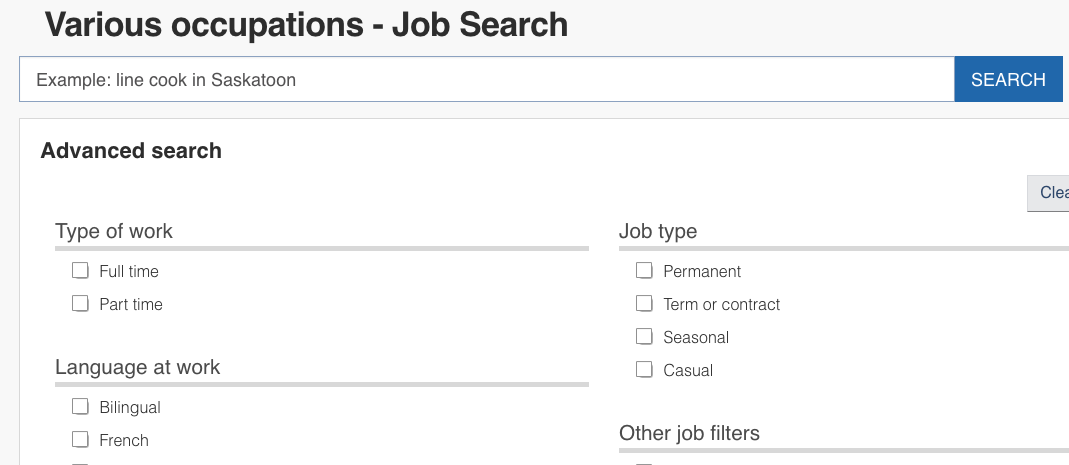Identify the right job title for your job search
Your occupation may be called something different in Canada—job titles and descriptions aren’t universal! This is why you need to know the right job title for your search.
Canada uses the National Occupational Classification (NOC) system to classify job titles in its definition of the labour market. When you completed the “work history” section of your Working Holiday permit application, you were asked to specify your job description, so you may have already found a NOC code that matches your job title.

It pays to use the right terminology when looking for a job and when creating your Canadian-style resume. Not all employers use the exact NOC terminology but it’s a useful place to start your job search.
To find your job title, use the tools on the NOC page:
- Search by job title keyword: simply enter one or several keywords matching your job description, for instance “web developer.” The tool will return several job titles (“e-business [electronic business] Web site developer”, “Web site developer”, etc.) and one or several NOC codes (“21234 Web developers and programmers”).
- Search the NOC page: you can select different search types from the provided icons, such as Occupational and Skills Information System, NOC Hierarchy and Structure, Taxonomy and Advanced search.
- Search occupational structure by skill type: for instance, if you choose to “Search by NOC code”, you can see all the main NOC codes in a dropdown list. Click on the one you think fits best and see if the job titles listed underneath match what you were looking for.
When you find a job title that seems to match yours, click on it to read the description (e.g. main duties and employment requirements). Once you have found a correct match, make a note of the NOC code.
For more information about the NOC system, read Working in Canada: what is meant by TEER categories 0, 1, 2, 3, 4 and 5?
Alright, now that you know your NOC code, your job title and the basic requirements of the job, it’s time to find job opportunities in your field!
Find opportunities in your field or sector
To find labour market information, you can try the Explore an occupation tool developed by Job Bank. Use the resources available to find out details for a given occupation (wages, skills required, etc.).
If you know where you want to live and work, enter your occupation and the city or postal code in the search boxes provided. If you don’t know where you’ll be living yet, pick any city and fine-tune your search later. If you know your NOC code, enter it directly.
Select the applicable job title and click on the blue search button. You’ll be directed to a “Job Market Report” page for your chosen occupation and city.
Review all the tabs of the report:
- Jobs: a list of current job postings in the city, the province and in Canada (if available).
- Wages: average wages per hour and before tax for the occupation with low, median and high estimates. Remember this information when negotiating your salary!
- Prospects: the number of stars indicates the local employment potential (one star = limited prospects, two stars = fair, three stars = good, etc.). A short report provides more information about employment growth and positions available.
- Requirements: you can find out if the occupation is regulated and if professional associations exist for this occupation. Read the next chapter for more info on regulated occupations.
- Competencies: a list of skills that you will need for the job, which you could use to create your Canadian-style resume or to draft your cover letter.
















 Français
Français English
English




0 comments
{{like.username}}
Loading...
Load more